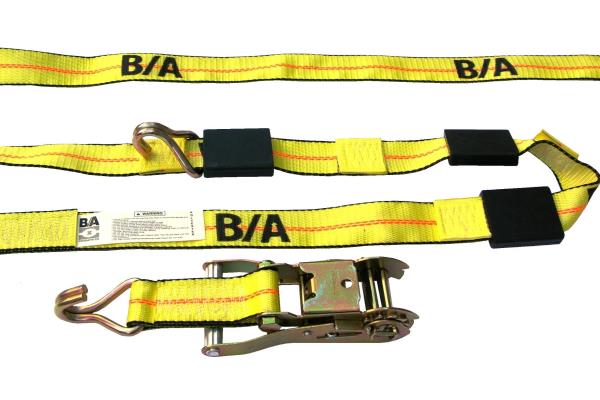Ratchet Strap Use and Storage Safety

Ratchet straps are an important part of the transportation industry as well as the safety of drivers, loads and those around you.
As such it is important that they are inspected for damage each time they are used. It is also important to use them and store them to prevent such damage to begin with.
Today we’ll look at tips for keeping your ratchet straps in good condition.
Things NOT to do with a ratchet strap:
- Dragging ratchet straps on the ground, floor or over abrasive surfaces.
- Pulling ratchet straps from under cargo when the cargo is resting on the ratchet strap—place blocks under cargo if feasible.
- Shortening or adjusting ratchet strap using methods not approved by the ratchet strap manufacturer or qualified person.
- Twisting, kinking or knotting the ratchet strap.
- Exposing ratchet straps to damaging acids or alkalis.
- Using ratchet straps or allowing exposure to temperatures above 194°F (90°C) or below -40°F (-40°C).
- Using the ratchet strap with hardware that has edges or surfaces that could damage the ratchet strap.
- Running/driving over ratchet straps with a vehicle or other equipment.
Bear in mind also that water absorption can decrease a nylon ratchet strap's strength by as much as 10–15% (its strength returns when the ratchet strap dries completely).
Other environmental factors such as an exposure to sunlight, dirt or gritty-type matter and cyclical changes in temperature and humidity, can result in an accelerated deterioration of ratchet straps. The rate of this deterioration will vary with the level of exposure to these conditions and with the thickness of the ratchet strap webbing.
Ratchet straps that are used outdoors regularly should generally be permanently removed from service within a period of 2 to 4 years. All ratchet straps that are exposed to these conditions should be highly scrutinized during their inspections.
Visible indications of such deterioration can include the following:
- Fading of webbing color.
- Uneven or disoriented surface yarn of the webbing.
- Shortening of the ratchet strap length.
- Reduction in elasticity and strength of the ratchet strap material due to an exposure to sunlight, often evident by an accelerated abrasive damage to the surface yarn of the ratchet strap.
- Breakage or damage to yarn fibers, often evident by a fuzzy appearance of the web.
- Stiffening of the web, which can become particularly evident when ratchet straps are exposed to outdoor conditions without being used or cyclically tensioned.
In order to prevent damage to ratchet straps, they should be stored in a cool, dry and dark location. Ratchet straps should also be stored in an area free from environmental or mechanical sources of damage, such as: weld spatter, splinters from grinding or machining, heat sources, chemical exposure, etc.
These are handy tools but only if they truly secure the load properly. Ensure you treat and store them accordingly. Your life may depend on it.